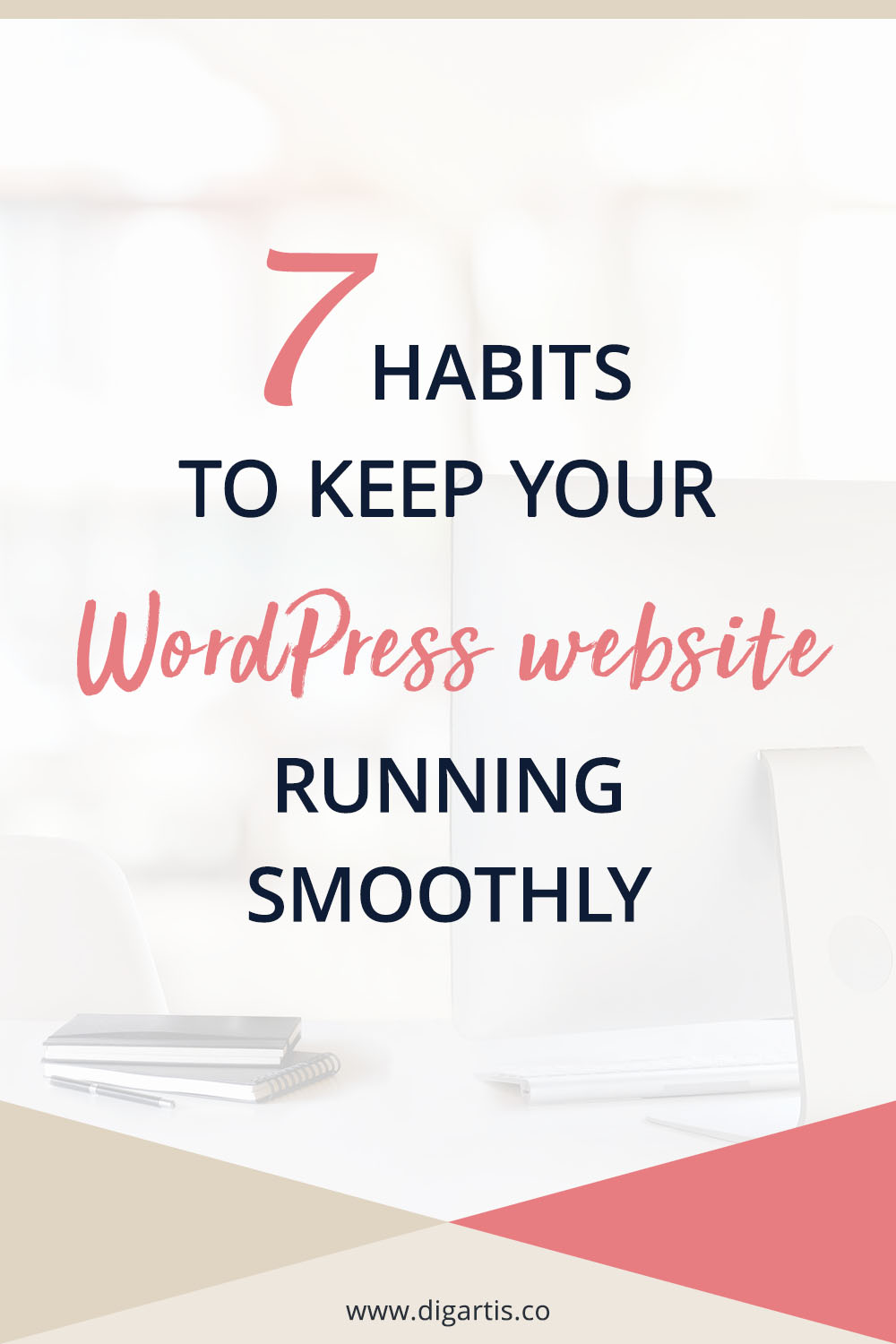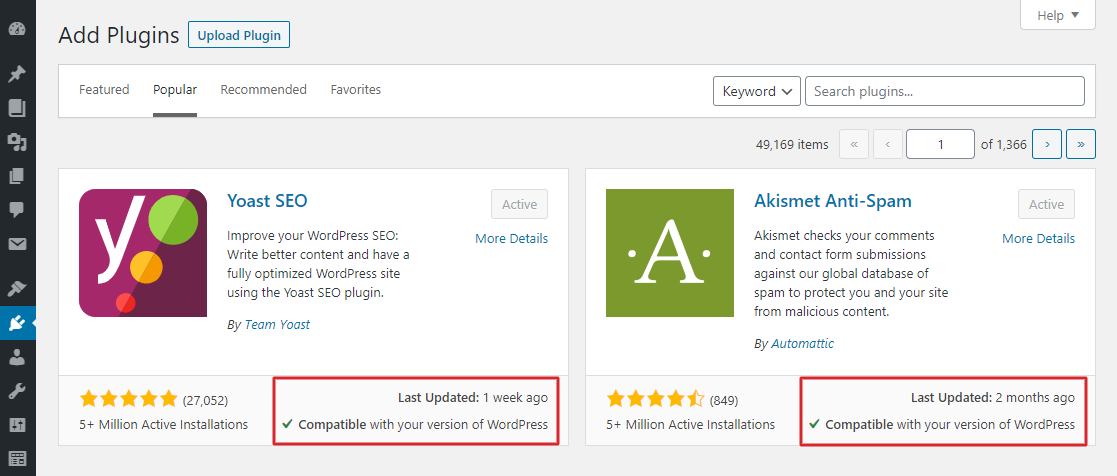We all know that WordPress is an awesome content management system that makes adding and editing content super simple, but it comes with some downsides as well. The thing about WordPress is, it can be slow as heck. And it usually gets slower over time when content gets added and new plugins installed.
We can mitigate this issue by performing regular maintenance on the website. By following these 7 habits diligently, you’ll boost your website performance considerably and make it more secure.

1. Keep your site up to date
Did you ever wonder how often do you need to update WordPress core, themes, and plugins? The short answer is – all the time! Outdated themes, plugins, and WordPress versions are easy targets for hackers. And they can also slow down your page load significantly.
So how do we go about that? Even though there are many plugins for scheduled maintenance, we recommend you do these manually. Before performing major updates, we recommend you to backup your website (see section 2). This way, you can restore it to an older working state in case something goes wrong.
WordPress software
WordPress updates its software regularly, and a lot of the updates are of the security nature. So the next time you log in, make sure to check your dashboard for any new updates and install them straight away.
Plugins and themes
Old plugins and themes represent serious vulnerabilities for your website and may also slow down your page loading times. So it’s always a good idea to keep these up-to-date.
Important note! You should never install any plugins or themes that aren’t updated regularly. Before installing a plugin, always look at the last updated info and compatibility with your current WP version (see image below). For most plugins, it should not be older than six months.

2. Regular backups
We can’t stress enough the importance of backing up your site regularly. If anything goes wrong, you can restore your site to an older working version with just a couple of clicks.
How often should you do it?
Well, this depends on how often you make changes to your content. It’s also important to back up your website before you update or add new plugins.
How do you backup your website?
It’s common for hosting service providers to offer the option to back up a website. If that’s the case with your hosting, we recommend you to make full use of it. If you’re not sure, just ask their support team.
Whether your hosting allows you to do backups or not, it’s always good to have a plugin for backups as an additional layer of security. There are many useful plugins out there you could use for this purpose, but our favorite is UpdraftPlus. UpdraftPlus has a free version that provides both on-demand and scheduled backups and the option to restore your website with a few clicks. The premium version comes with a few more goodies, like remote storage on Google Cloud, automatic backups when updating WP/plugins/themes, and others.
3. Deactivate unused plugins
Unused plugins are completely useless, and they are just taking up space. So do yourself a favor and deactivate them.
If you think you won’t be using a certain plugin in the near future, you should get rid of it completely. Just go to your Plugins section, deactivate the plugin and then delete it. This way, you will free your website of redundant code.
4. Clean up trash and old revisions
It’s a good practice to do regular checks of the trash and delete any items that have been there for some time. They are just weighing your website database down for no good reason.
The same goes for old revisions. It’s good to have a few recent revisions in case you change your mind and want to rewind to an older version of your posts or pages. Having revisions can save you some time, but they can also fill up your site’s database pretty quickly. So just delete the old ones.
How can you delete revisions?
The simplest way to do that is by using a database optimization plugin like WP-Optimize or WP-Sweep.
5. Check for broken links
A broken link is a link that points to a page that doesn’t exist anymore or has been moved to a different URL. Broken links can harm your search ranking and create a bad experience for your visitors. Fortunately, it’s quite easy to find and fix them.
Here is a list of some of the free online broken links checkers:
Alternatively, you can use a plugin for this purpose. Most such plugins will allow you to find all broken links on your site and help you fix or redirect them.
6. Compress images for upload and delete unused media items
Images are usually the largest files on a website, so it can take pretty long for them to load. By optimizing images, we can reduce the page load times significantly and make the user experience much more pleasant.
How do we compress images?
You can use an online tool such as TinyPNG that’s super easy to use and will compress .jpg or .png images in no time. Before uploading these images to your WordPress site, just run them through this tool, and you will see how much space you’ve saved.
There are also plugins (Smush, EWWW Image Optimizer, etc.) you can use for bulk compression. They will save you some time, but just like any other plugin, they will slow down your site as well. So if you are not uploading too many images, TinyPNG is a better option.
How to delete unused media items?
If you’re not using a certain media file (image, video, or other uploaded files), you should delete it from the Media library. Go to Media > Library, select the media file that you don’t need anymore, and click on Delete Permanently.
7. Delete Spam Comments
If you are using any anti-spam tools like Akismet, you will probably notice comments marked as spam in your dashboard. These get blocked by the plugin’s filters, but they still get stored in your website’s database. Make sure you delete them regularly, so they don’t pile up and take up valuable space.
Conclusion
So there you have it, seven habits that will keep your website running like a well-oiled machine. At this point, you may be wondering how you will ever find the time to do all of these regularly. At first, it may take you some time to get the hang of it, but once you turn these habits into a routine, it won’t take that much time, and the benefits for your website will be huge.
Are you already following any of these habits? Which ones do you find the most effective? Leave a comment below!



